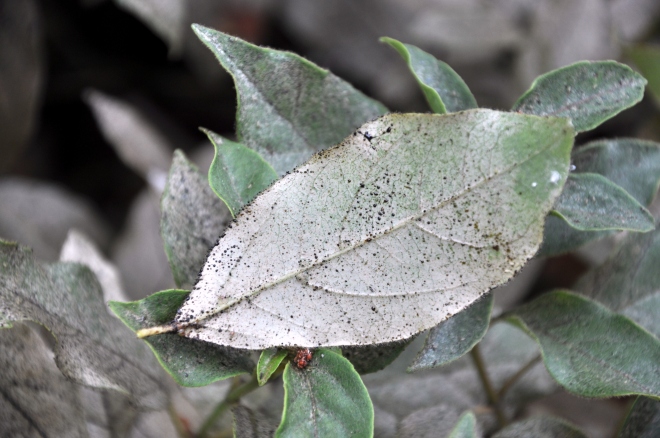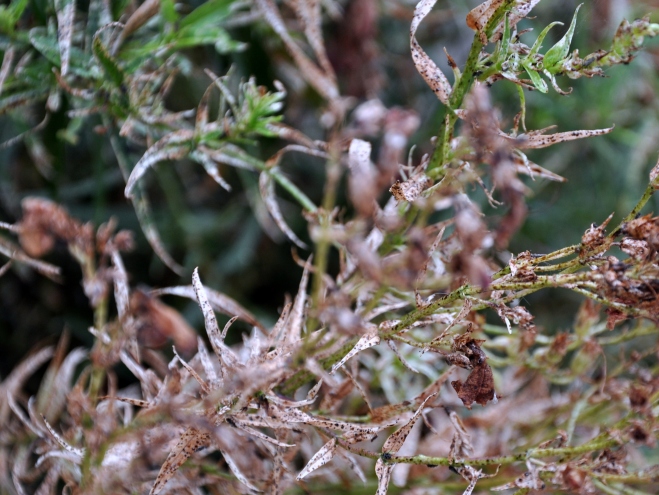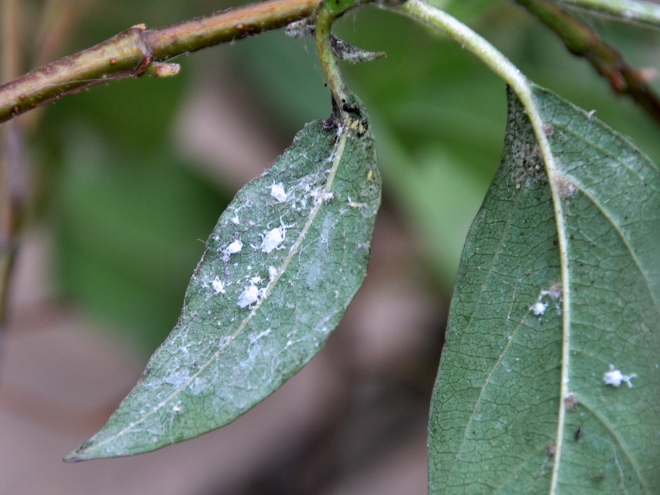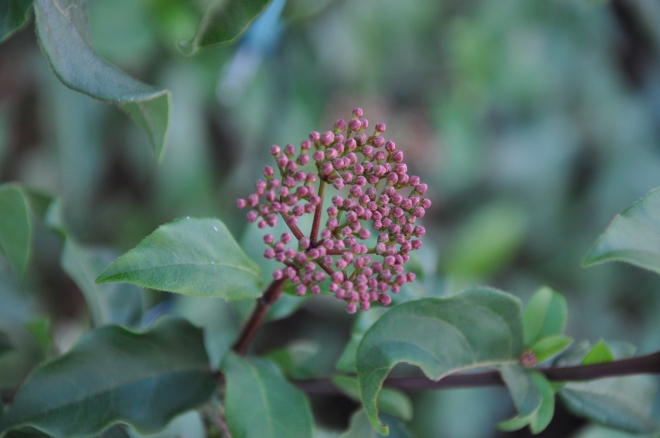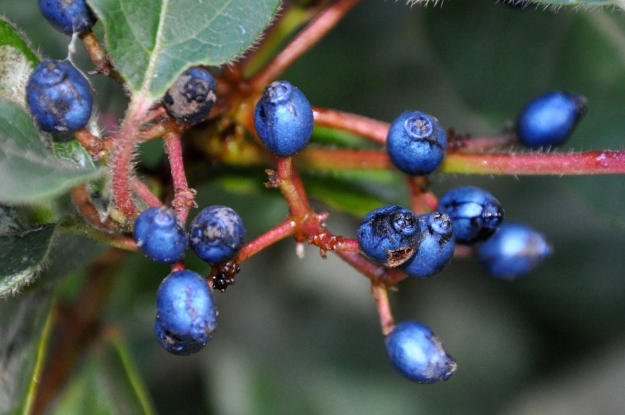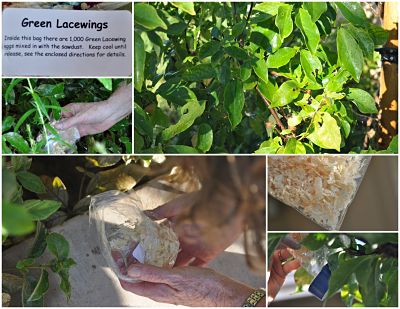It’s the start of American football season, so please forgive the metaphor. As far as the Viburnum tinus is concerned, the score is not in my favor. It’s time to take one for the team. Though I feel personally defeated, it’s not all bleak. I don’t have a brain concussion from brutal tackles and I’m not benched for bad behavior.
It’s time to throw in the towel. Yet who wants to admit they’ve been bamboozled by a bug, tricked by a thrip, or outmaneuvered by aphids? Certainly not me.
I garden organically which means no pesticides or poisons. This limits my options, but I’m okay with that.
For the past seven years (yes years) I’ve been doing battle with thrips. Until last week, Viburnum Tinus filled the space between our home office window and the walkway to our deck. When healthy, it’s quite lovely. You can see the plants looking their best here. Shiny, dense green leaves give way to flowers and dark purple berries. It provided cover for the lizards and made a nice green hedge under the window.
Yet year after year, the thrips return and the problem seems to get worse. This year they invited aphids to the party and things looked grim.
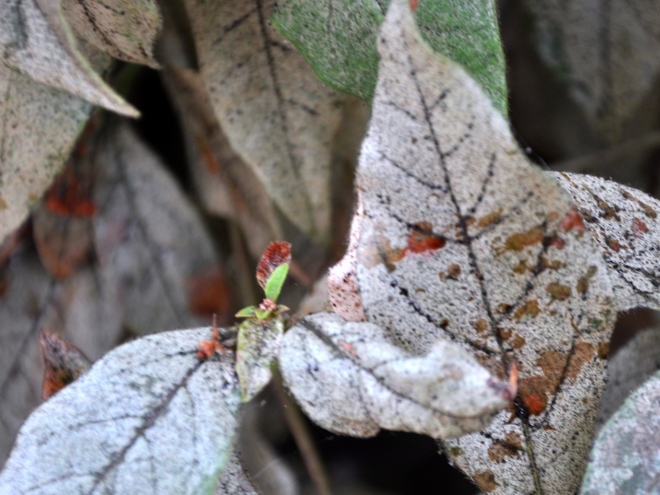
Leaves coated in sooty mold, a product of the “leavings” of insects. Also, possibly scale (dark red area)
By mid-summer, sticky, odoriferous goo covered the plants. Some years I give the plants a hard prune, but honestly, how much can you remove before the plant is bare? We ordered lacewing eggs one year, expecting them to hatch and eat the larvae of these pests. The smell goes away in the winter so we initially thought we had solved the problem.
I don’t know if the drought plays a role in this, but this past summer the smell was akin to…how do I say this nicely…vomit. It kept us from spending time on the deck and forced us to close the window at night. When the days cooled down and we wanted to let in the breeze, the pests tickled our nostrils with that nauseating smell.

Planthopper, another garden pest. Several of them jumped out of the bushes while I pruned away the damaged leaves.
They had to go.
While I was away one day, my husband removed one of the five shrubs, leaving a gaping hole next to the deck. We “filled in the space” with our garden cart (how pretty) and the remaining shrubs sat there smelling up the place. Then we were in for another heat wave, and then I traveled, and you know how it goes.
But that smell.
Knowing I didn’t have the strength to remove the shrubs by myself, I did the next best thing: I pruned them down to the thickest branches, using the tools I have.
I’m reluctant to plant something new right away, but the space looks barren. I raked, swept, hand-picked and hopefully removed every last offensive, pest-covered leaf. While working away, I encountered a hopping green bug, sticky aphids, and other unidentified bugs.
When I reached the last of the five shrubs, I spotted a praying mantis. They’re fascinating creatures with rotating heads and stick like bodies. They’re also good for the garden, munching on non-beneficial bugs. Clearly these shrubs were no match for a single bug, no matter how hungry.
After running inside for my camera and attempting some video, I removed his branch and carried him to another part of the garden. They will also eat small hummingbirds, and I didn’t want to take any chances.
Three hours later I had cleared the last of the shrubs, and I had the sore back to prove it. I was also racing the clock for the yard waste pick up. Once a week, on trash day, the garbage collector takes away yard waste. I certainly didn’t want any of those leaves living in my compost pile so off they went.
Short term, I hung a string of lights between a pair of gardening trellises. I don’t want anyone inadvertently stepping off the walkway ramp.
The final score is thrips, seven years and this gardener zero. Going forward, I plan to significantly improve the odds.



